Exploring Results
How to navigate, view and interpret the results of an automated Integration Test.
Test Results
In Unifi Test Asistant, once you click 'Run' you will see the Integration Test Result record being populated with each of the Integration Test Scenario Results in real-time as they happen.
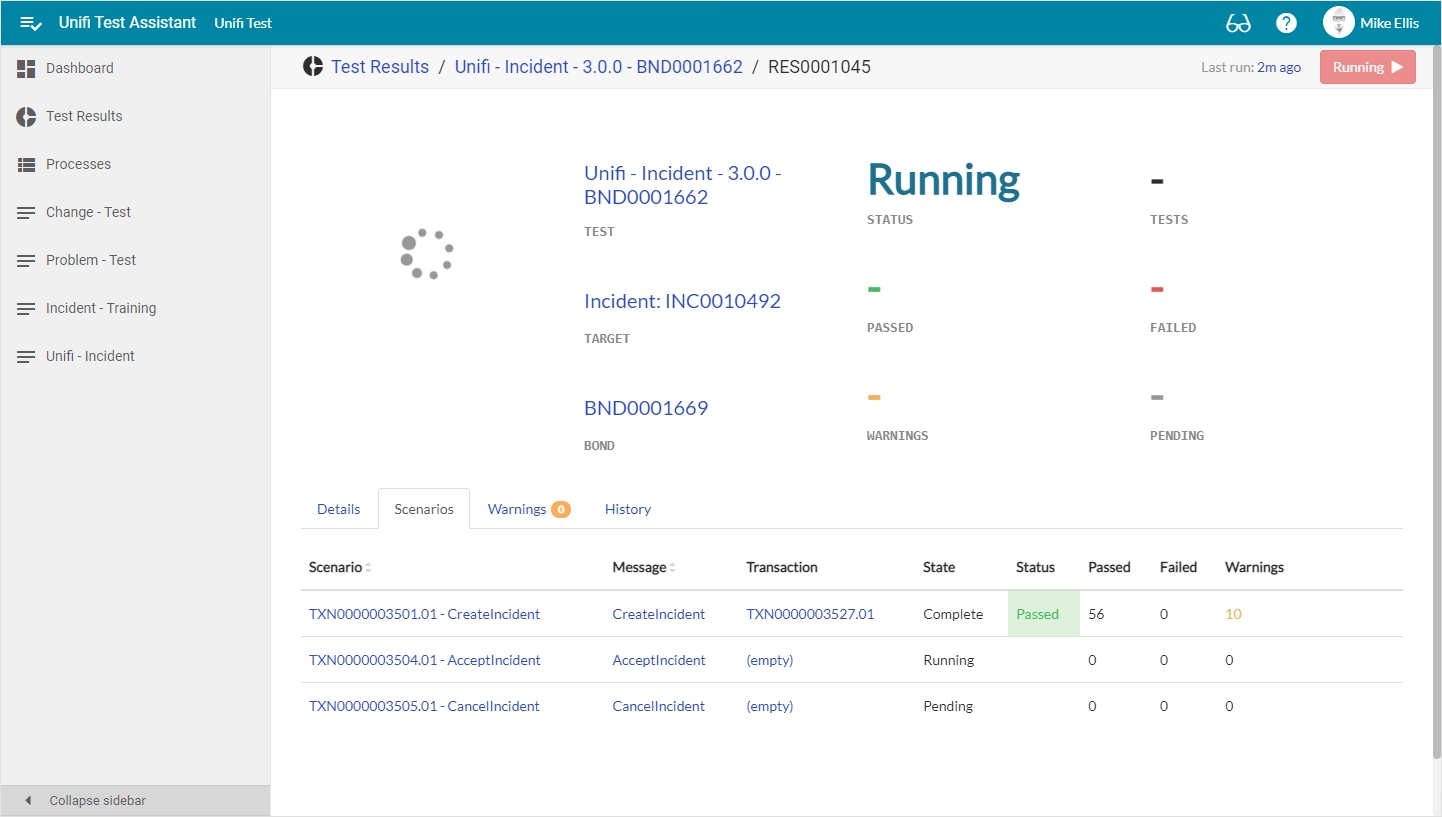
Once complete, the results for each of the Integration Test Scenarios are tallied and rolled up to the Integration Test Result.
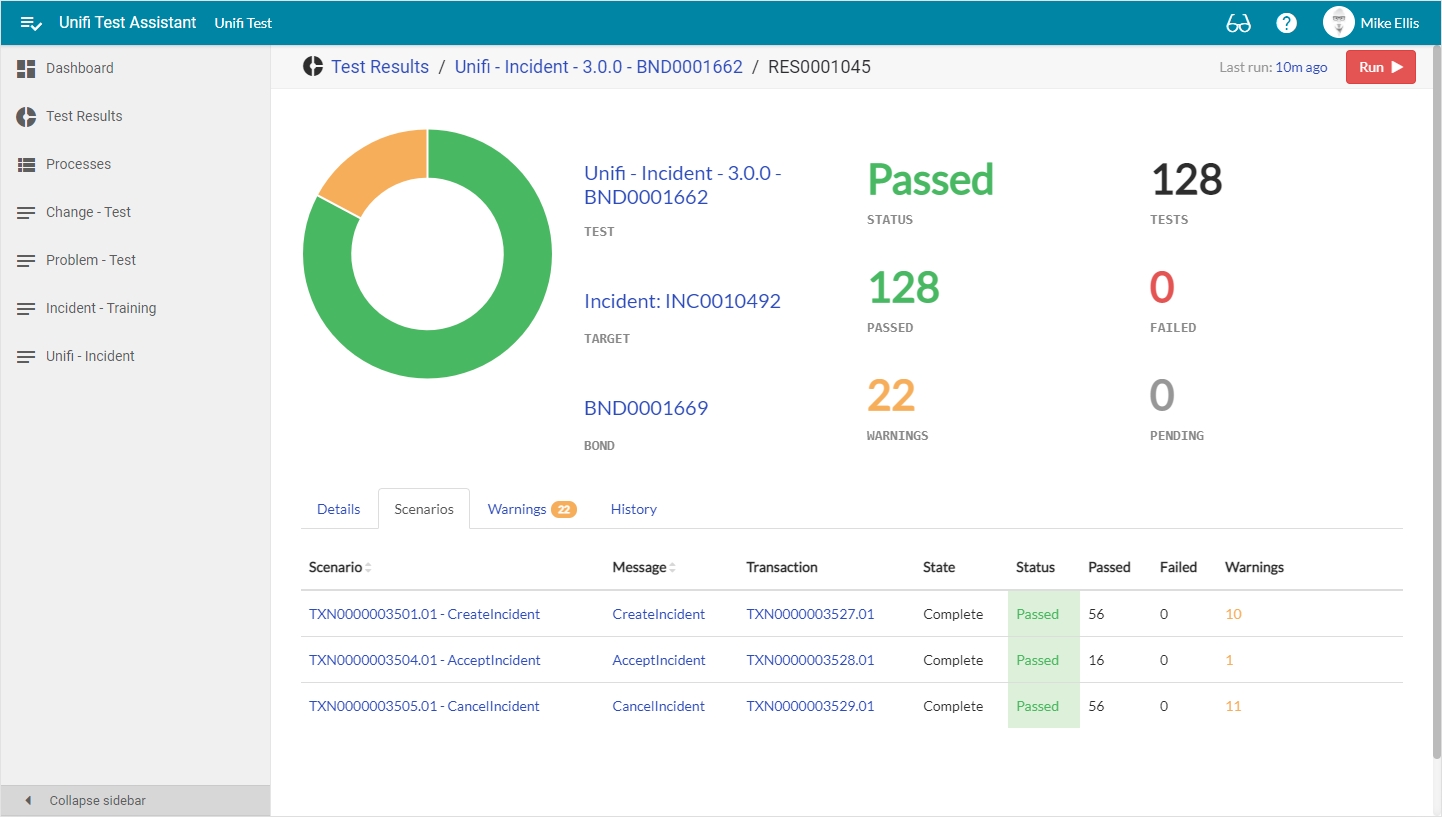
The top of the pane displays a graph and various counts showing the overall Status and numbers of Tests grouped by Status. You can also link out to the Integration Test along with the Bond & Target Record created during the test run.
Details
The Details tab shows the description (as entered after generating the test), along with the date/time and the version of Unifi installed when created. It also links out to the Integration and Process records (opening Integration Designer in a new window).
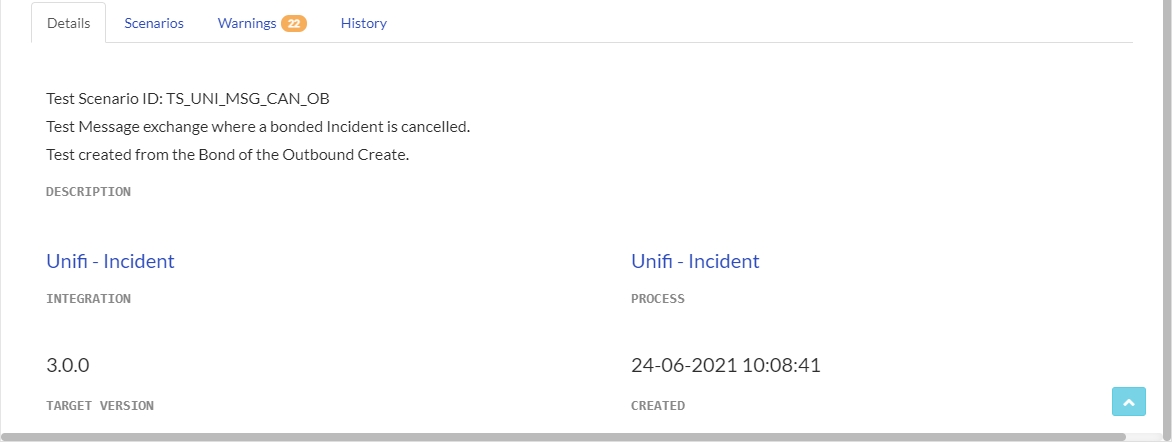
Scenarios
The Scenarios tab shows each of the Integration Test Scenario Results. Clicking the Scenario link will open the Result for that Integration Test Scenario. Clicking the Transaction link will open the Transaction record created during the test run.
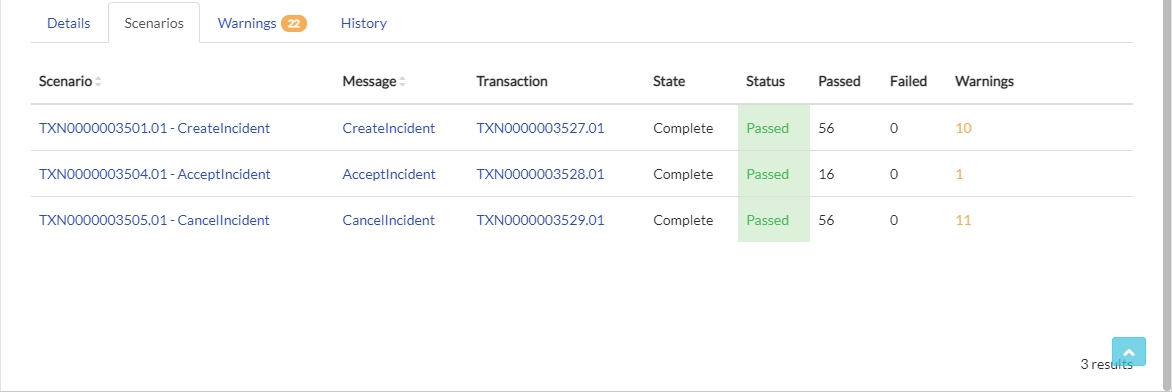
Warnings
The Warnings tab shows all the warnings grouped by each Integration Test Scenario Result. From here you can step into each of the relevant Results and the relevant 'Transport Stack' records (e.g. Stage, Request, Bond, Snapshot).

History
The History tab shows a list of the results of each test run. Each time a Test is run, the Result will be added to the top of this list. Clicking the value in the Number column will display the relevant Integration Test Result above.
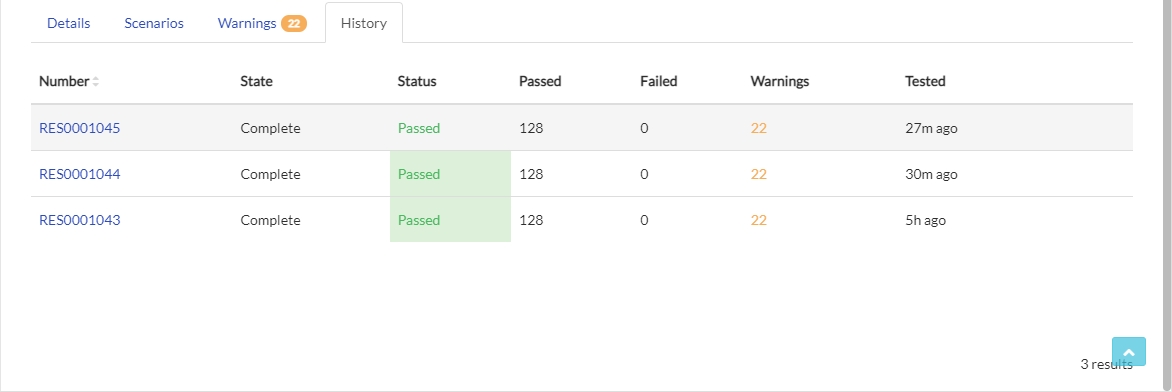
Test Scenario Results
You can step into each Integration Test Scenario Result from either the Scenarios or Warnings tabs. Clicking the link will open it in a new window. An example is shown below.
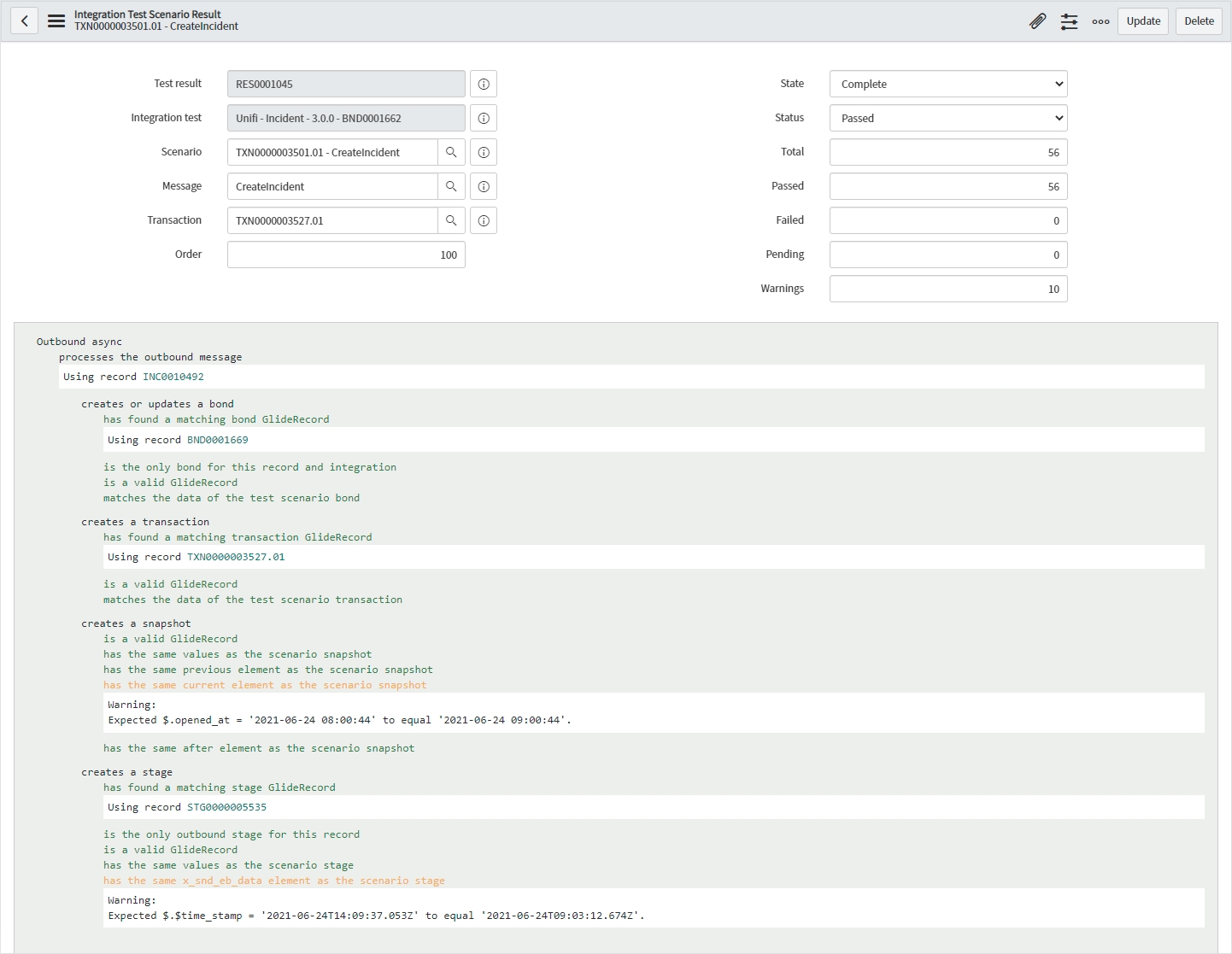
Dashboard
The Test Results are then rolled up to the Process...
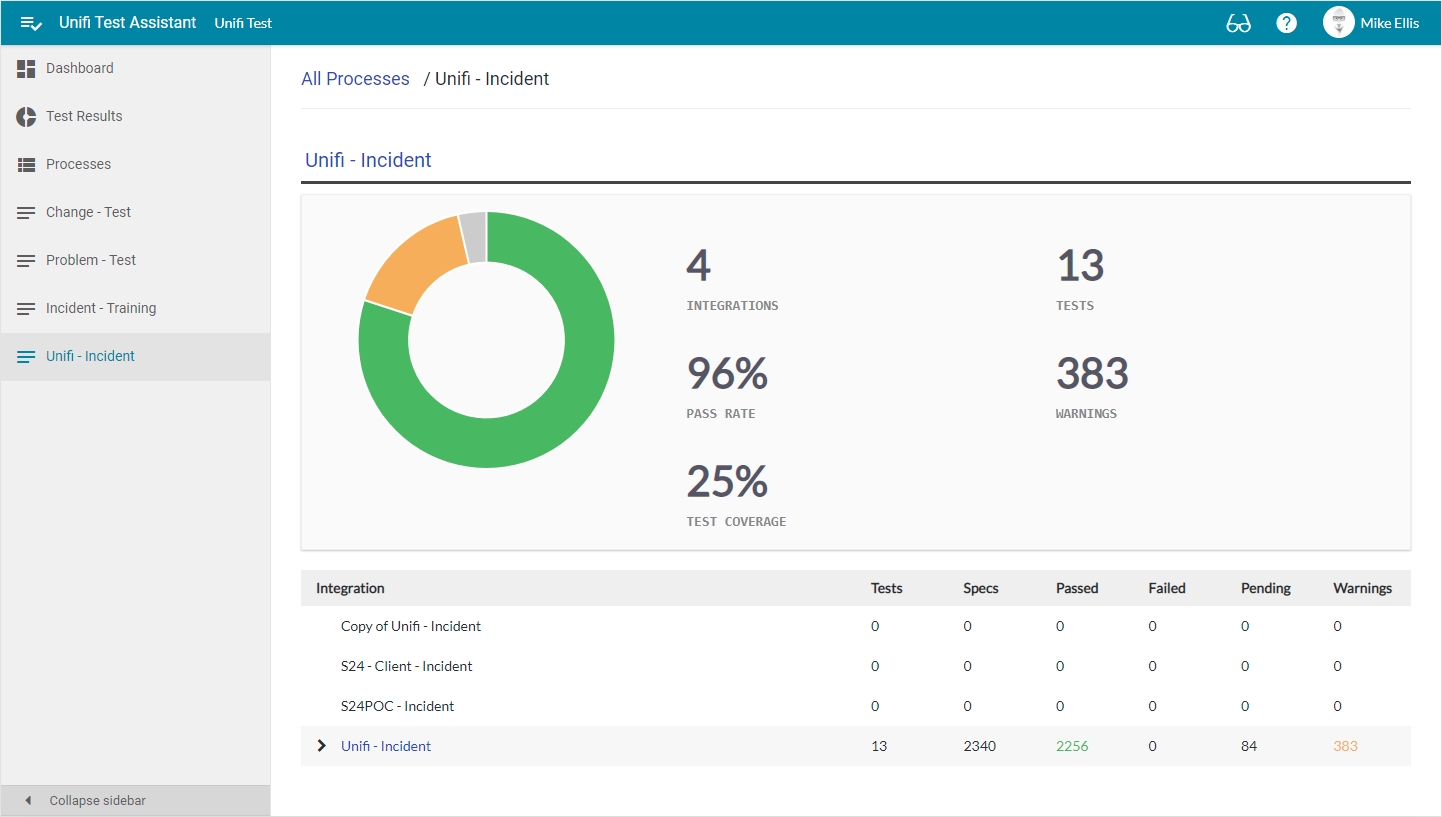
...and the Dashboard.
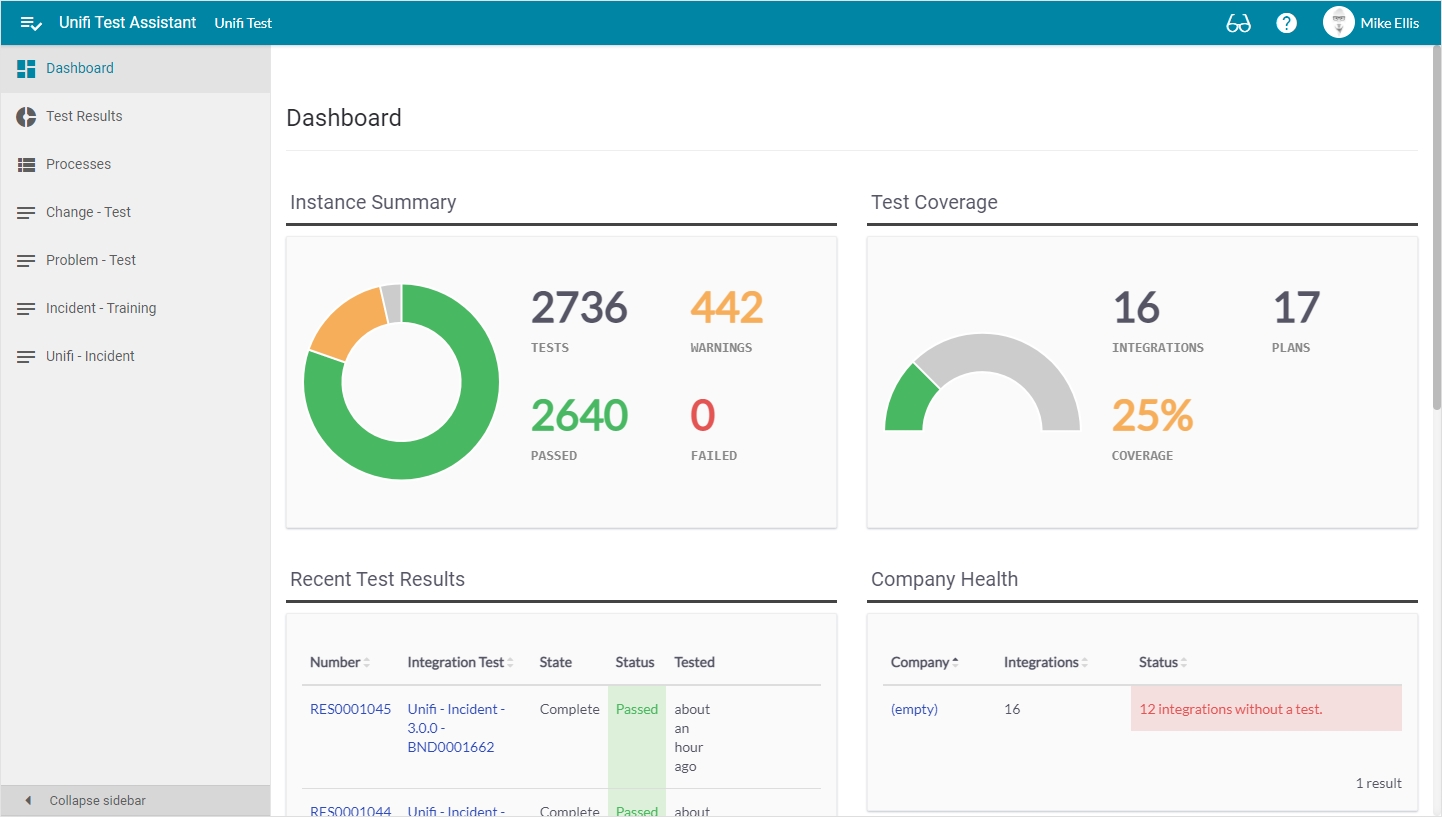
Instance Summary
This is a summary of all the tests that have been run on the instance. Each of the relative graph segments are clickable links to a list of the relevant Test Result records containing tests which match the filter criteria (i.e. Passed without warning, Passed with warning and Pending).
Test Coverage
This shows the number of Tests in relation to the number of Integrations on the instance (Unifi expects at least one Test to exist for each Integration & coverage is calculated on the percentage of Integrations containing at least one Test). The Chart is a graphical representation of the test coverage percentage & the segments are clickable links to a list of the relevant Integrations. Note: in the exanple above, 25% coverage means that only four out of the sixteen Integrations have at least one Integration Test associated.
Recent Test Results
This displays a list of the most recent Test results. Clicking the Number will open the Test Result in the Unifi Test Assistant window; clicking the Integration Test will open the Integration Test in the platform in a new browser window.
Company Health
This displays the Integrations on the instance grouped by Company. It displays a range of messages about the status of those Integrations in terms of Tests (e.g. '12 integrations without a test', or 'No integration tests found' etc.). Clicking the Company will open a new window containing a list of the Tests for that Company. This will be of particular value if you are a Managed Service Provider (MSP).
Was this helpful?
